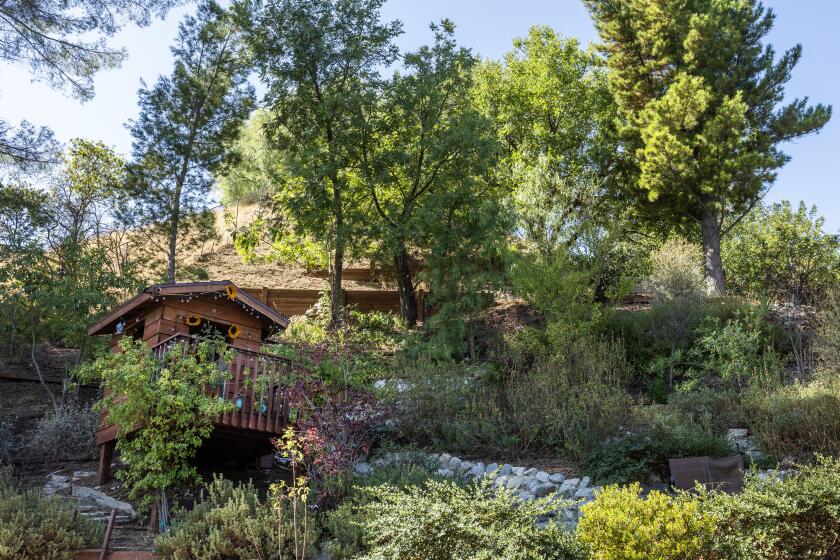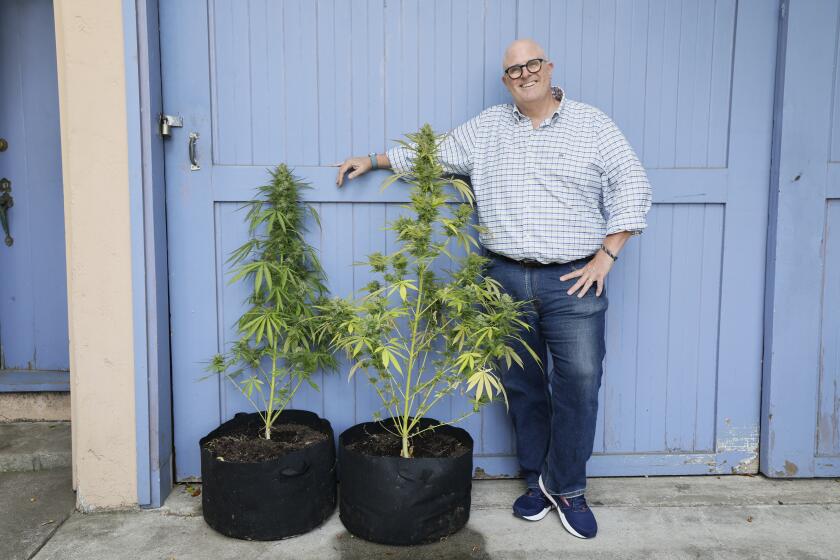Stinking Rose Blooms in Desert
Nevada might be famous for its gambling and gold, but garlic reigns supreme in the high desert fields.
“We have about the No. 1 garlic seed industry in the country,” said Robert Gronowski, chief of Nevada’s plant industry bureau.
Central California is the fresh garlic capital of America, but the fields there are prone to virus and disease. The soils of the high western Nevada deserts are mostly disease free--and that allows Nevada farmers to cultivate hardier, healthy seed bulbs.
“Almost all of the garlic seed used in California is produced in Nevada,” said Jim Snyder, a rancher who also raises about 200 acres of garlic.
California producers use the seed to grow garlic for either table use or dehydration.
Nevada’s garlic production has tripled this decade, from 550 acres in 1991 to about 1,800 acres in 1996, said Marty Owens, statistician for the University of Nevada, Reno College of Agriculture.
Acreage in Nevada this year is estimated at more than 2,000, in fields scattered mostly throughout Douglas and Lyon counties, and in Washoe County near Gerlach, where the state’s largest garlic seed producer, Empire Farms, sits amid high desert mountains a clove’s throw away from the barren terrain of the Black Rock Desert.
Last year, the nearly 8 tons per acre yielded in Nevada was valued at $5.3 million, up from $825,000 in 1991, Owens said.
Garlic cloves for seed are planted in October. The plants germinate before cold weather settles in, and the roots develop through the winter.
The waxy, supple stalks take off again in spring and are harvested in August.
The dried tops of the plants are first mowed down, then machinery is used to dig the bulbs from the earth. The piquant, thin-skinned clusters are then either scooped up by machine into large bins or picked up by hand and placed in sacks for shipping.
“We ship these practically all to California, to either dehydrators or fresh growers,” Snyder said. “They will crack the bulbs into individual cloves for growing over there.”
Each Nevada-grown bulb, when broken into cloves, equates to about eight plants when sown in California.
True, Nevada’s garlic production is a mere pittance compared with the 130 million pounds worth about $90 million produced annually in California.
But Nevada growers point out that without their seeds, their neighbors to the west would have less reason to gloat.
“The product’s no better than the seed,” said Jacques Etchegoyhen, Douglas County commissioner.



